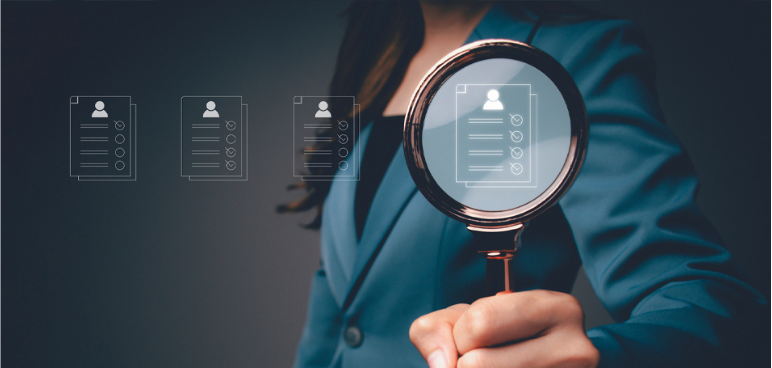I recently wrote about the importance of leveraging online data to improve your training program. I suggested finding metrics that help you understand Reach (are your customers engaging with your content?), Quality (do your customers find your content valuable?), and Impact (does consuming your content drive business metrics, like product adoption?)
In this article, I want to zoom in on the category of metrics I think is most important: Quality. After all, if your content is poor, then all your efforts to increase reach will fall flat. If your content isn’t valuable to customers, then it won’t generate an impact on your product. So, it really begins with quality content. Focus on that first, and you’ll see organic improvement in both reach and impact!
Many customer education professionals use completion rate and/or customer satisfaction scores (“smiley sheets”) to measure content quality. Both metrics certainly have merit, but I believe another metric trumps them both: Content consumption is an unambiguous measure of quality and, in many cases, provides a clearer picture of value than both CSAT and completion rate.
What is content consumption? It’s the amount of content, on average, consumed by individuals. In essence, it’s your customers telling you, “Yea… that was helpful content. Let me consume some more.”
So why measure content consumption rather than (or in addition to) completion rates and CSAT scores? Because customers might complete content and deem it unhelpful, and so never take another course. Or, they might love your content because it was funny, but didn’t feel compelled to continue. By measuring content consumption, however, you not only have an indication of how much content is consumed, but you can also infer that customers are completing the content, and that they must have liked it (or at least found it worthwhile of their time).
12 tips to drive learning content consumption
I believe every customer education team should have a plan to measure and increase content consumption. Here are some tips on how you can make content more compelling and drive up your customer training content consumption rates.
- It starts with thinking through how to distribute the content in a way that feels easy and engaging for customers. You don’t want to create a bunch of PDFs that you send by email – outdated and not friendly. Hosting your content makes it easily accessible. Your website and social channels are fantastic in driving top-of-funnel awareness. It helps you to define your space and implants the idea that you are a leader.
- It’s important to have a strategy to provide for prescriptive paths through content (a next generation customer education platform is an excellent choice for training content). When a customer finishes one piece of content, remove all ambiguity around what content they should consume next. Reach out to your learners at every juncture: when they start a course, when they complete a course, etc. A learning technology platform can auto send an email saying, “Congratulations on your accomplishment. We think you might be interested in this next course.” Nurture learners from one piece of content to the next.
- Surface content when and where it’s most relevant for your customers. Remember, your customers are busy professionals. Don’t place the burden on them to chase down content. Instead, think about how to drive content consumption “just in time” with respect to what customers need to do with your product. Contextual micro-learning (e.g. a 1-minute video embedded in your software, or an infographic on your Knowledge Center) can be particularly valuable as a way to make sense of a product feature.
- To paraphrase step 1 of Gagne’s Nine Events of Instruction, grab learners’ attention. Orient them to how this experience will benefit them – answer the “what’s in it for me?” question. For example, use headlines and titles that are catchy and immediately convey the value of spending time with your content. Also, choose visuals with care. Selecting a course or piece of content is often a snap decision, and some learners are visually-oriented. Random stock images of people around a table aren’t as inspiring as something that is more creative or more closely aligned with your brand.
- Have a plan for organic search and how you will optimize content for search engines. Analytics will tell you that a sizable portion of your audience is coming from Google search, no matter how hard you work to create a browsable experience. You want to own this. You want to be on page one at the top. You do not want your learners accessing someone else’s content, whether from a competitor or a YouTube user who is making your product seem far more complicated than it is.
- Think about increasing consumption by making content more bite-sized and “snackable,” or modular. That doesn’t mean covering the same content but talking faster; rather, it means “chunking” content so that it’s divided into a logical sequence of short sessions that, taken together, fulfills the learning goal. How bite-sized? If consumption is on-the-fly (vs intentional), learners generally have anywhere between 2-5 minutes of attention (10, if you’re lucky).
- While content must be intrinsically motivating, gamification can be used to further motivate and reward learners. If there’s real value in gaining mastery of the material (which is the core motivator), gamification may supply just the boost needed to get them to consume more. One simple tactic that works very well is to create a celebratory moment. Perhaps a moment of delight at the end of one course to help the learner transition into the next. A burst of energy, like at the end of a level in a video game.
- Here’s a tip from a customer of ours that teaches tax compliance to business owners. They provide their customers with a “sandbox” – a replication of reality but a place where they can try out concepts they’ve learned and see their effect – without any real-world implications. It’s a safe place and it really increases consumption, engagement and retention.
- We all love job-aids. Rather than just “telling” customers something, provide them with some kind of worksheet, or activity, or way of reflecting on what they learned. Give them an artifact of some kind. It will not only help consolidate what they learned and apply it to their own situation, but it might also stimulate memory later on when they find it sitting on their desk one month later.
- Remember the three I’s. Content works best and is consumed the most when it is: Iterative; Interactive; Intimate.
- Make sure you are listening to your customers. You need the qualitative feedback that comes from focus groups and individual interviews. Get their opinion on the quality and relevance of content and delivery, and how they’d like to see it improved.
- Test, test, test. Try different strategies and tactics. Finding out what works best also means finding what doesn’t work at all. Don’t be afraid to fail. Change your perception to FAIL = For All I’ve Learned.
Hopefully, these tips will help you see your consumption rates rise. Just remember the most important tip of all: Empathy. Don’t forget who you’re creating the content for. It’s not for your marketing team. It’s not for your sales team. It’s for your customer. ALWAYS lead with the question, “how can I make this content helpful for my customers?” Above all else, that is fundamental to creating quality content.

To learn more about creating effective and impactful customer education content, make sure to download our Customer Education Playbook!



